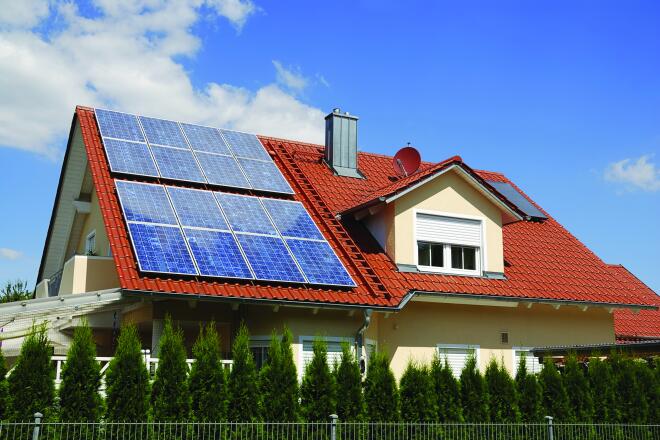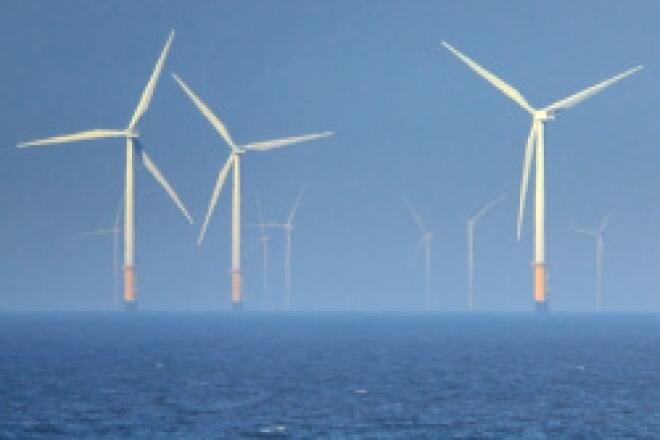
Three More Exciting Things About the Evolving World of Energy
In recent years, technology has evolved in leaps and bounds and has virtually transformed our daily lives. From the advent of the smartphone to the expansion of the internet, we truly live in a digital society today.
But did you know that this technological progress also has major implications for how we get, use and pay for energy? Earlier this year, we covered six cool things about the evolving world of energy, but with so much change taking place, we’re back with three more exciting things about the world of energy:
1. Batteries will be everywhere and will maximize renewable energy
Just like with solar panels, the cost of batteries has dropped considerably in just the past few years. And the growth of energy storage technologies – namely lithium-ion batteries for now – will truly be revolutionary for how we use energy.
Why is that exactly? Well, when you turn on a light in your home, that energy has been travelling from the point of generation (that is, the power plant) across the wires of the power grid. The power is not stored anywhere – the power is produced according to the demand, which can be a fairly complicated balancing act. Batteries and other types of energy storage (like pumped hydro) are changing the game by allowing the energy to be produced and then stored until the ideal time of use.
This can be beneficial in a few ways. One is that when demand for electricity spikes electric utilities often have to fire up “peaker plants” to match the demand. However, this option can actually be quite pricey, and studies have already shown that big batteries (like the ones Tesla installed in Australia) can save utilities and customers a lot of money.
Another has to do with the falling prices of renewable energy – which is now considerably cheaper than fossil fuel-derived energy. Since the sun isn’t always shining nor is the wind always blowing, renewable energy is entering a new era of efficiency by being paired with storage. Batteries can charge up during times of high output and low demand and then release this energy as needed, creating a cleaner and cheaper future for us all.
2. You can save serious money by changing when you use energy
In addition to changes in how produce energy, smart meters and other smart grid technologies are creating new opportunities for saving money around when and how we use energy. Electric utilities across the U.S. are increasingly offering time-varying or time-of-use (TOU) electric rates for residential consumers.
This effectively means that instead of paying the same rate all day for electricity consumed in your home, the day may be divided up into three or more rate periods based on electricity demand. For example, after 10 o’clock at night and into the early morning, electricity use is pretty low. In a TOU rate, if you were to charge your electric vehicle or run your dishwasher during this time, you’d pay much less per unit of electricity consumed.
On the other hand, when people come home from work or are using the kitchen to cook dinner, demand for electricity is very high – which we call “peak demand”. Under a time-varying or TOU rate, you should avoid using electricity during this time (as much as is reasonably possible) to save money and save the electric utility from firing up one of those inefficient peaker plants. It may sound complicated compared to what you’re used to, but studies have shown that the vast majority of consumers will save money under this type of rate plan even with little to no changes in behavior. And smart thermostats and smart appliances (dishwasher, refrigerators, etc.) can be added to your home to automatically adjust electricity consumption.
Even without switching to a TOU rate, there are also still ways you can get paid to shift your energy use. For example, many electric utilities will credit your account if you opt to use less electricity during “peak demand events” or “conservation events” a few times a year (usually during a summer heat wave). If you choose to participate in one of these events, not only will you get some money back on your next bill, but it will help reduce your local utility’s need to invest in and expand the grid.
3. Our electric grid will be even more reliable and dependable
Finally, there are many exciting changes that relate to the reliability and resilience of our power grid. In recent years, electric utilities and governments have made considerable investments to reduce the vulnerability of the electrical system, which is known as grid hardening. In particular, adding smart grid technology to the electric grid has improved restoration times during outages and kept the lights on more consistently for customers.
Simply put, a smart grid incorporates communications technology so that parts of the grid can “talk” to others. While a traditional electric grid is built using a “hub-and-spoke” pattern, a smart grid can connect the “spokes” to enable multiple paths for power to flow. When a tree falls on a power line or lightning strikes a transformer, for example, smart grid technologies can sense the problem and automatically route power around it. This can mean the difference between a lengthy outage and a momentary flickering of the lights.
Smart grid technology can also automatically alert the utility to outages and help diagnose problems before sending a service crew. This can help ensure that the crew has the right equipment to fix the problem, which significantly reduces both the time and cost for restoring power.
While these innovations are already making huge impacts on today’s energy ecosystem, there’s still a lot of other changes – both being implemented today and being developed for the future – that are helping create a smarter, cleaner and more efficient world of energy. Want to learn more? Check out our recent “Evolving World of Energy” video on our YouTube channel and download our series of in-depth fact sheets here.



